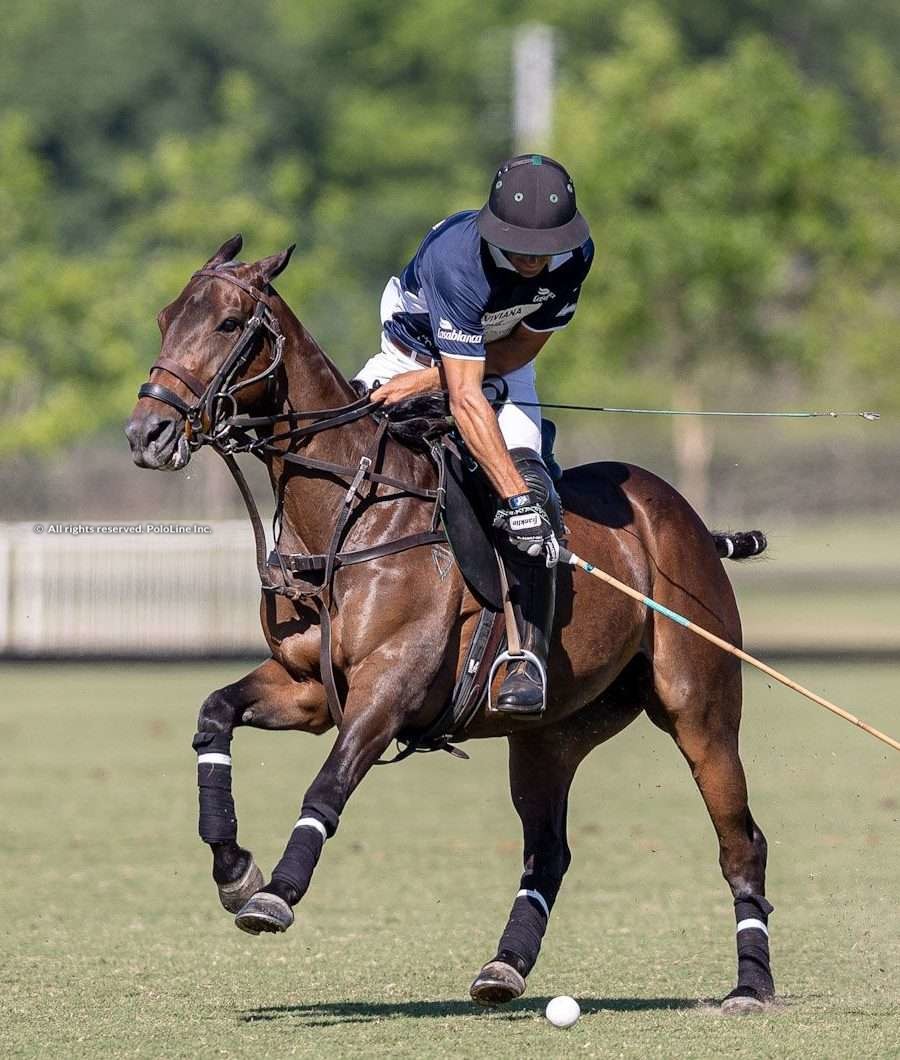This is one of the most difficult shots to do. It is used in particular circumstances, like when a player is being ridden off on their stick side, when a ball suddenly changes sides, and when not taking the ball on the forehand would illicit a foul.
It is carried out with a full, complex, corporal rotation, where the horse should be maintained in the correct position.
NEARSIDE FOREHAND
A) Platform (initial position)
The stick should be held in the same way it would be with a backhand or nearside backhand. A good starting position is very important when carrying out this shot. The player should take support from the left stirrup, the torso should incline forward and to the left, and the right shoulder should go forward, and the left should go back, both in line with the left knee. The left arm should be held tight to the body due to the act of carrying the whip, the right arm moves back and up towards the left shoulder, taking the mallet above the player’s head. The height depends on the distance needed. The important aspect here is maintaining a ninety-degree angle between the stick and the forearm.
B) Down Swing
The rotation of the core and the subsequent movement of the shoulder will mean the arm will lower towards the ball. Resultantly, the elbow extends, lowering the stick at great speed. Like all types of shot, we should respect the nintey-degree angle achieved in the starting position when the stick is lowered. The hand will rotate until it makes contact with the ball.
C) Pre-contact.
Just as in all forehand strikes, the player’s arm should align with their shoulder and the ball, with the mallet moving backwards (45 degrees or more) so that there is a whip-like effect when the ball is hit.
D) Contact
The impact will occur at the height where the knee projects out on the side—in this case, to the left. The movement of the shoulders here is very important, since they move to be in exactly the opposite position. The knees point towards the left side and swiftly towards the front. The left leg constantly remains supported on the stirrup of the same side. It is very important to maintain the horizontality of the foot in the stirrup, and a firm grip that allows solid support. The right foot helps the balance and is supported by the inner knee and thigh. This balancing leg moves to an almost horizontal position, perpendicular to the running line of the horse.
E) Follow Through
The stick projects up and forwards. The phase finishes with the shoulder, elbow and right wrist projecting forwards and up by the impulse of impacting the ball. The torso quickly returns to the initial position. The head of the mallet moves up and back. The swing will widen in such a way that the right hand passes almost at the height of the horse’s eye after impacting the ball.
Important considerations for this shot:
1) Set the ball up so the positioning is just right.
2) The grip, with the thumb as the principal actor.
3) Total independence of the left hand that grips the reins. This way the horse is not taken over the position of the ball.
4) Use the right shoulder to point towards the objective.
NEARSIDE FORWARD:
A) Platform (initial positioning)
B) Down swing
C) Pre-contact
D) Contact
E) Follow Through

